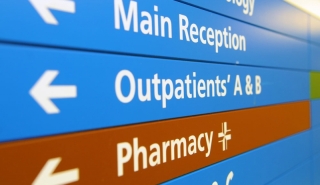In this section
Orthodontics: Taking care of your teeth
Retainers
After you've received orthodontic treatment, it is necessary to hold the teeth in their final position with retainers. Retainers prevent the teeth from slipping back towards their original position, known as 'relapse'.
We recommend long-term retainer wear to prevent relapse, as teeth can move long after active orthodontic treatment has finished. Retainers can be either fixed or removable, depending on the original problem.
We monitor your retainers for one year after active treatment, before discharging you from the orthodontic department back to your dentist. At that point, any replacement retainers will need to be provided by your dentist - there is usually a fee for this.
Even with retainers, it is normal for minor tooth movement to occur. These movements do not usually require further treatment.
Caring for your teeth and brace
Our oral health educators will advise you on the best ways to care for your teeth and appliances while undergoing treatment. You will be told which foods to avoid and which products can be beneficial when considering oral hygiene and care.
Any dental problems need to be cared for by your regular dentist, so you must continue to attend your general dental check-ups throughout your treatment.
What are the risks involved in orthodontic treatment?
Tooth decay
Tooth decay is one of the main risks of orthodontic treatment is tooth decay. Fixed braces make it more difficult to keep the teeth clean, therefore increasing the risk of tooth decay. This risk can be minimised by restricting dietary intake of sugars (sweets, juices, fizzy drinks etc) and maintaining excellent oral hygiene. Your orthodontist will provide you with advice on how to achieve this.
Gum disease
If plaque is not removed adequately from the teeth, inflammation of the gums can occur, resulting in red, swollen gums and gum disease. Maintaining excellent oral hygiene will prevent this from happening.
Root shortening
A side effect of moving teeth with braces is that the roots of the teeth (the part of the tooth beneath the gum) will get shorter. This is a normal process and, in most patients, the effects are minimal. Some patients are at a greater risk of root shortening; your orthodontist will advise you of this.
Relapse
For most people, the teeth may try to move back towards their original position following orthodontic treatment. This is known as relapse. At the end of orthodontic treatment, you will be provided with retainers, which we recommend that you wear every night for one year, then alternate nights long-term to maintain the position of the teeth and prevent relapse. If you do not wear your retainers, your teeth will move, and you will not be provided with further orthodontic treatment to correct them.
Loss of vitality/need for root canal treatment
Occasionally, the nerve inside the tooth becomes inflamed or irritated during orthodontic treatment. This can cause the nerve inside the tooth to die off. If this was to happen, your dentist would need to provide you with a root canal treatment. Generally, this is a rare occurrence, but it can be more common if you have had previous damage to a tooth (e.g. during an accident).






